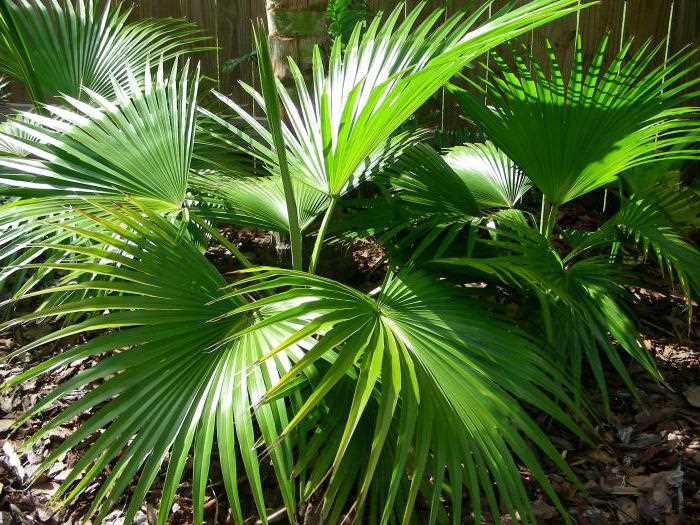- Liviston: Understanding and Caring for Different Species at Home
- Introduction
- Types of Liviston
- Light Requirements
- Watering
- Temperature and Humidity
- Fertilizing
- Pests and Diseases
- Conclusion
- Identifying Liviston Species: Key Characteristics and Features
- 1. Leaf Structure:
- 2. Leaf Color:
- 3. Trunk:
- 4. Inflorescence:
- 5. Fruits:
- 6. Growth Habit:
- Creating the Perfect Environment: Providing the Right Conditions
- Temperature and Humidity
- Lighting
- Watering and Soil
- Fertilizing
- Regular Maintenance
- Pet-Friendly Considerations
- Conclusion
- Watering Liviston: Best Practices and Mistakes to Avoid
- 1. Watering Frequency:
- 2. Watering Amount:
- 3. Watering Method:
- 4. Avoid Standing Water:
- 5. Pay Attention to Environmental Factors:
- 6. Be Mindful of Seasonal Changes:
- 7. Check Soil Moisture:
- 8. Mist the Leaves:
- 9. Adjust Watering Based on Plant Signals:
- Fertilizing Liviston: Nourishing Your Plant for Optimal Growth
- Choose the Right Fertilizer
- Follow the Proper Schedule
- Apply the Fertilizer Correctly
- Water After Fertilizing
- Monitor Your Liviston’s Response
- Avoid Overfertilization
- Pruning and Trimming: Maintaining the Health and Shape
- 1. Tools Needed
- 2. When to Prune
- 3. Removing Dead Fronds
- 4. Trimming Overgrown Fronds
- 5. Shaping the Plant
- 6. Care for Wounds
- 7. Disposing of Pruned Material
- 8. Regular Maintenance
- Pests and Diseases: Common Issues and How to Resolve Them
- Common Pests
- Common Diseases
- Maintenance Tips
- Propagating Liviston: Growing New Plants from Seeds or Cuttings
- Growing New Plants from Seeds
- Growing New Plants from Cuttings
- Q&A:
- Can I grow a Liviston at home?
- What are the different species of Liviston?
- How do I identify the species of my Liviston?
- What are the watering requirements for Liviston?
- Does Liviston require a lot of sunlight?
- How often should Liviston be fertilized?
- What should I do if my Liviston’s leaves are turning brown?
- Video: I Planted A Wildflower Meadow | Amazing Lawn Transformation | From Seeds to Blooms
Are you looking to add a touch of tropical paradise to your home? Look no further than the Livistona. With its stunning foliage and elegant appearance, this palm species has become a popular choice for indoor gardeners. In this complete guide, we will dive into everything you need to know about caring for and identifying different Livistona species at home.
Known for their large, fan-shaped leaves and slender trunks, Livistona palms can create a beautiful focal point in any space. These plants are native to the tropical and subtropical regions of Asia and Australia, where they thrive in warm and humid environments. With the right care, Livistona palms can adapt well to indoor conditions, making them a great addition to any home or office.
One of the key factors in successfully growing Livistona species at home is understanding their specific care requirements. These palms prefer bright, indirect light, so it’s best to place them near a south or west-facing window. If the light is too intense, you can use sheer curtains or blinds to filter it. Additionally, Livistona palms appreciate high humidity, so it’s beneficial to mist their leaves regularly or use a humidifier to create the optimal environment.
Identifying different species of Livistona can be challenging for beginners. However, a distinct characteristic of these palms is the presence of spines along the petiole and margin of their leaves. The color and texture of the leaves can also vary between species. Some common Livistona species include the Livistona chinensis, Livistona rotundifolia, and Livistona australis. Each species has unique features and care requirements, so it’s essential to familiarize yourself with the specific traits of your Livistona palm to ensure its proper growth and health.
Liviston: Understanding and Caring for Different Species at Home
Introduction
Liviston, commonly known as fan palms, are a popular choice among indoor plant enthusiasts. With their elegant appearance and relatively easy care requirements, they can add a touch of tropical beauty to any space. However, it’s important to understand that there are different species of Liviston, each with its own unique characteristics and care needs.
Types of Liviston
There are several species of Liviston that are commonly grown as houseplants. These include:
- Liviston Chinensis – Also known as the Chinese fan palm, it is characterized by its large, fan-shaped leaves. This species is known for its hardiness and ability to tolerate low-light conditions.
- Liviston Rotundifolia – Also known as the roundleaf fan palm, it has smaller leaves compared to other species. It is a good choice for smaller spaces and can thrive in bright, indirect sunlight.
- Liviston Australis – Also known as the cabbage tree palm, it features distinct, arching fronds. It prefers bright, indirect light and can tolerate a wide range of temperatures.
Light Requirements
Understanding the light requirements of your Liviston is crucial for its healthy growth. In general, most Liviston species prefer bright, indirect light. Placing them near a north or east-facing window is ideal. However, some species, like the Liviston Chinensis, can tolerate lower light conditions, making them suitable for areas with less natural light.
Watering
Proper watering is essential for the well-being of your Liviston. While they do require regular watering, it’s important not to overwater them. Allow the top inch of soil to dry out between waterings to prevent root rot. Water your Liviston thoroughly and evenly, making sure that excess water drains out properly. Using a well-draining potting mix can help prevent waterlogging.
Temperature and Humidity
Most Liviston species prefer temperatures between 65-85°F (18-29°C). They can tolerate slightly cooler temperatures, but avoid exposing them to temperatures below 50°F (10°C). As for humidity, Liviston palms prefer moderate to high humidity levels. Misting the leaves or placing the plant on a tray filled with water and pebbles can help increase humidity.
Fertilizing
Regular fertilizing is important for the healthy growth of your Liviston. Use a balanced, water-soluble fertilizer and apply it according to the package instructions. During the growing season, which is typically spring and summer, fertilize your Liviston every 2-4 weeks. Reduce the frequency to once every 2 months during the rest of the year.
Pests and Diseases
Liviston palms are generally resistant to pests and diseases. However, they can occasionally be affected by issues such as spider mites, mealybugs, and scale insects. Regularly inspect your plant for any signs of infestation and take appropriate measures, such as using natural insecticidal soap or neem oil, to control the problem.
| Species | Light Requirements | Watering | Temperature | Humidity |
|---|---|---|---|---|
| Chinensis | Low to bright indirect light | Allow top inch of soil to dry out between waterings | 65-85°F (18-29°C) | Moderate to high humidity |
| Rotundifolia | Bright indirect light | Allow top inch of soil to dry out between waterings | 65-85°F (18-29°C) | Moderate to high humidity |
| Australis | Bright indirect light | Allow top inch of soil to dry out between waterings | 65-85°F (18-29°C) | Moderate to high humidity |
Conclusion
By understanding the characteristics and care needs of different Liviston species, you can ensure that your plants thrive and bring beauty to your indoor space. Remember to provide them with the right lighting conditions, water them appropriately, maintain a suitable temperature and humidity level, and be mindful of pests and diseases. With proper care, your Liviston will flourish and enhance the ambiance of your home.
Identifying Liviston Species: Key Characteristics and Features
If you are a plant enthusiast and have Liviston species in your collection or garden, it’s important to be able to identify them accurately. Here are some key characteristics and features to help you identify different Liviston species:
1. Leaf Structure:
- Observe the leaf structure of the Liviston species.
- Look for fan-shaped or palmate leaves.
- Note if the leaves are segmented or palmately divided.
- Pay attention to the leaf size and the number of segments or divisions.
2. Leaf Color:
- Examine the color of the leaves.
- Some Liviston species have green leaves, while others may have silver-gray or bluish-green leaves.
- Check if the leaves have any patterns or variegation.
3. Trunk:
- Observe the trunk of the Liviston species.
- Notice the texture and color of the trunk.
- Some Liviston species have smooth trunks, while others may have rough, fibrous, or hairy trunks.
- Check if the trunk is solitary or clustering.
4. Inflorescence:
- Pay attention to the inflorescence of the Liviston species.
- Look for flower clusters or spikes.
- Observe the size, color, and shape of the flowers.
- Notice if the flowers have any fragrance.
5. Fruits:

- Check the fruits of the Liviston species.
- Look for round, oval, or elongated fruits.
- Observe the color and texture of the fruits.
- Notice if the fruits have any unique features, such as spines or scales.
6. Growth Habit:

- Observe the overall growth habit of the Liviston species.
- Some Liviston species have a single trunk, while others may have multiple trunks.
- Note if the species is a slow or fast grower.
- Check if the Liviston species forms dense clusters or grows as a solitary plant.
By considering these key characteristics and features, you can improve your ability to identify different Liviston species accurately. Remember to consult plant guides, online resources, or seek expert advice to confirm your identification.
Creating the Perfect Environment: Providing the Right Conditions
Temperature and Humidity
One of the most important factors in creating a perfect environment for Liviston palm trees is maintaining the right temperature and humidity levels.
- The ideal temperature range for Liviston palms is between 65°F and 75°F (18°C and 24°C), making them suitable for indoor cultivation in most climates.
- Ensure that the palm is kept away from drafts, as sudden drops in temperature can cause stress and damage to the plant.
- Liviston palms thrive in environments with moderate to high humidity levels. Aim for humidity levels between 50% and 70%.
- To increase humidity, you can place a humidifier near the plant, regularly mist the leaves with water, or set the plant on a tray filled with water and pebbles.
Lighting
Liviston palms require bright, indirect light to grow properly. Here are some tips for providing the right lighting conditions:
- Place the Liviston palm near a north or east-facing window where it can receive bright, filtered light. Avoid placing it in direct sunlight, as it can scorch the leaves.
- If you don’t have access to a suitable window, you can use artificial lighting. Use fluorescent lights or special grow lights designed for plants to provide the necessary light spectrum.
- Rotate the plant occasionally to ensure even growth and prevent it from leaning towards the light source.
Watering and Soil
Proper watering and soil conditions are essential for the health of Liviston palm trees. Follow these guidelines:
- Water the palm when the top inch (2.5 cm) of the soil feels dry to the touch. Overwatering can lead to root rot, while underwatering can cause the leaves to wilt.
- Use well-draining potting soil that retains some moisture but doesn’t become waterlogged. A mixture of peat moss, perlite, and sand is suitable for Liviston palms.
- Allow excess water to drain from the pot to prevent waterlogging, which can lead to root rot. Empty the saucer or tray underneath the pot after watering.
Fertilizing
Fertilizing Liviston palms helps provide essential nutrients for healthy growth. Consider the following when fertilizing:
- Use a balanced palm or houseplant fertilizer with equal amounts of nitrogen, phosphorus, and potassium.
- Fertilize once a month during the growing season (spring and summer) and reduce fertilization to every two to three months during the dormant period (fall and winter).
- Always dilute the fertilizer according to the manufacturer’s instructions to avoid burning the roots.
Regular Maintenance
The Liviston palm tree requires regular maintenance to keep it healthy and attractive. Here are some tips:
- Wipe the leaves with a damp cloth regularly to remove dust and keep them clean.
- Trim any brown or yellow leaves using clean, sharp pruning shears to maintain the palm’s appearance.
- Inspect the plant regularly for pests, such as spider mites or mealybugs. If you notice any infestation, treat it promptly with an appropriate insecticidal soap or oil.
- Repot the Liviston palm every two to three years to provide fresh soil and room for growth. Choose a pot that is one size larger and use a well-draining potting mix.
Pet-Friendly Considerations
While Liviston palms are generally safe for pets, it’s important to note that some animals may still experience digestive discomfort if they ingest the leaves. Take the following precautions:
- Keep the palm out of reach of curious pets to prevent them from chewing on the leaves or knocking over the pot.
- If you notice any signs of ingestion or digestive issues in your pet after interacting with the palm, consult a veterinarian immediately.
Conclusion
Creating the perfect environment for Liviston palm trees involves providing the right temperature, humidity, lighting, watering, soil, and regular maintenance. By following these guidelines, you can ensure the health and vitality of your Liviston palms for years to come.
Watering Liviston: Best Practices and Mistakes to Avoid
Proper watering is essential for the health and growth of Liviston plants. Here are some best practices to follow and common mistakes to avoid when it comes to watering your Liviston:
1. Watering Frequency:
It is important to water your Liviston plants regularly, but avoid overwatering. The frequency of watering depends on various factors such as the species, size of the plant, humidity, and temperature. As a general rule, water your Liviston when the top inch of the soil feels dry.
2. Watering Amount:
Ensure that you water your Liviston plants thoroughly, allowing water to penetrate the root system. Water until you see water draining out of the bottom of the pot. This will ensure that the entire root system gets enough moisture.
3. Watering Method:
Two common watering methods for Liviston plants are bottom watering and top watering. Bottom watering involves placing the pot in a tray filled with water and allowing the plant to absorb the water from the bottom up. Top watering involves pouring water directly onto the soil surface. Both methods can be effective, so choose the one that works best for you.
4. Avoid Standing Water:
Avoid leaving your Liviston plants sitting in standing water, as excessive moisture can lead to root rot. Make sure that the pot has drainage holes to allow excess water to escape. If using a decorative pot without drainage holes, consider using a liner or placing pebbles at the bottom to prevent water from stagnating.
5. Pay Attention to Environmental Factors:
Factors such as temperature, humidity, and air circulation can affect the watering needs of your Liviston plants. During hotter and drier months, you may need to increase the frequency of watering. Similarly, if you have a humid environment, you may need to reduce watering.
6. Be Mindful of Seasonal Changes:
Liviston plants may have different watering requirements based on the season. During the growing season, which is typically spring and summer, your Liviston may require more frequent watering. In the dormant season, such as winter, reduce the frequency of watering.
7. Check Soil Moisture:

Regularly check the moisture level of the soil by inserting your finger into the soil. If it feels moist, wait for some time before watering again. If it feels dry, it’s time to water your Liviston.
8. Mist the Leaves:

In addition to watering the soil, misting the leaves of your Liviston plants can help increase humidity levels and prevent the leaves from drying out. Use a spray bottle filled with water to mist the leaves, especially during dry periods or when the central heating is on.
9. Adjust Watering Based on Plant Signals:
Observe your Liviston plants for any signs of underwatering or overwatering. Drooping leaves, yellowing leaves, or wilting can be signs of underwatering, while yellowing leaves with mushy roots can indicate overwatering. Adjust your watering practices accordingly.
By following these best practices and avoiding common watering mistakes, you can ensure that your Liviston plants thrive and grow beautifully in your home.
Fertilizing Liviston: Nourishing Your Plant for Optimal Growth
Fertilizing your Liviston plant is a crucial step in ensuring its healthy growth and vibrant appearance. By supplying the necessary nutrients, you can help your Liviston thrive in your home environment. Here are some important guidelines to follow when fertilizing your Liviston:
Choose the Right Fertilizer
When selecting a fertilizer for your Liviston, it is important to choose one that is specifically formulated for palm plants. Look for a balanced fertilizer with a ratio of N-P-K (nitrogen, phosphorus, and potassium) of 3:1:3 or 3:1:2. This will provide your Liviston with the necessary nutrients for optimal growth.
Follow the Proper Schedule
Fertilize your Liviston every two to three months during the growing season, which typically spans from spring to fall. During the dormant winter months, it is best to avoid fertilizing as the plant’s growth slows down.
Apply the Fertilizer Correctly
Before applying the fertilizer, make sure the soil is moist but not waterlogged. Follow the instructions on the fertilizer packaging for the recommended dosage, as overfertilization can harm the Liviston. Scatter the fertilizer evenly around the base of the plant, ensuring that it does not come into direct contact with the leaves or stems.
Water After Fertilizing
After applying the fertilizer, water the plant thoroughly to help the nutrients penetrate the soil and reach the roots. This will also prevent any potential damage caused by fertilizer burn.
Monitor Your Liviston’s Response

Observe your Liviston closely after fertilizing to monitor its response. If you notice any signs of fertilizer burn, such as brown tips or scorched leaves, dilute the fertilizer by watering the plant more frequently. Adjust the frequency and dosage of fertilization based on the plant’s needs and response.
Avoid Overfertilization

Overfertilizing can be detrimental to your Liviston’s health. Signs of overfertilization include yellowing leaves, stunted growth, or the appearance of white salt deposits on the soil surface. If you suspect overfertilization, flush the soil with water to remove any excess nutrients and adjust your fertilization routine accordingly.
By following these guidelines and paying attention to your Liviston’s needs, you can provide the necessary nourishment for optimal growth and ensure a healthy and beautiful plant.
Pruning and Trimming: Maintaining the Health and Shape
Pruning and trimming are essential practices in maintaining the health and shape of your Liviston plants. Regular pruning removes dead or diseased fronds, stimulates new growth, and helps maintain the desired shape of your plants. Here are some tips for pruning and trimming your Liviston:
1. Tools Needed
Before you start pruning, make sure you have the necessary tools. These may include pruning shears, loppers, a handsaw, and protective gloves. Clean and sharpen all tools before use to avoid damaging the plant.
2. When to Prune
Pruning should be done during the spring or early summer when the Liviston plants are actively growing. Avoid pruning during the dormant period as it may hinder the plant’s growth.
3. Removing Dead Fronds
Start by removing any dead or yellowing fronds. These fronds not only detract from the plant’s appearance but can also provide a breeding ground for pests and diseases. Use your pruning shears or loppers to cut the fronds at the base, close to the trunk.
4. Trimming Overgrown Fronds
If you notice any fronds that are overgrown or extending beyond the desired shape, use your pruning shears to trim them back. Make clean cuts near the base of the frond, taking care not to damage the healthy foliage.
5. Shaping the Plant
If you want to maintain a specific shape for your Liviston, trim the fronds accordingly. Remove any fronds that are growing in a direction that goes against the desired shape. Trim the fronds gradually, avoiding drastic cuts that may shock the plant.
6. Care for Wounds
After pruning and trimming, it’s important to care for the wounds to prevent infections. Apply a fungicide to the cut ends to protect against fungal diseases. Avoid using excessive water on the wounds as it can lead to rotting.
7. Disposing of Pruned Material
Properly dispose of the pruned material to prevent the spread of diseases. Seal the pruned fronds in a plastic bag and dispose of them in the garbage. Avoid composting or using the pruned material as mulch.
8. Regular Maintenance
Pruning and trimming should be done on a regular basis to maintain the health and shape of your Liviston plants. Check for dead or diseased fronds and trim them as needed. Regular maintenance will keep your plants looking vibrant and healthy.
By following these pruning and trimming practices, you can ensure the health and longevity of your Liviston plants while maintaining their desired shape. Remember to always use sharp and clean tools, trim gradually, and care for the wounds to promote healthy growth.
Pests and Diseases: Common Issues and How to Resolve Them
Common Pests
- Spider mites: Spider mites are tiny insects that can be found on the undersides of Liviston leaves. They cause yellowing and wilting of the leaves. To control spider mites, rinse the leaves with a strong jet of water and apply an insecticidal soap.
- Mealybugs: Mealybugs are small white insects that can cluster on the leaves and stems of Liviston plants. They suck the sap from the plant, causing yellowing and distorted growth. To get rid of mealybugs, remove them manually using a cotton swab dipped in alcohol or use neem oil. Regularly inspect the plant to catch infestations early.
- Scale insects: Scale insects appear as small bumps on the stems and leaves of Livistons. They can be brown, black, or yellow. They feed on the plant sap and can cause wilting and leaf drop. To control scale insects, gently scrape them off with a toothbrush or cotton swab dipped in rubbing alcohol.
Common Diseases
- Fungal Leaf Spot: Fungal leaf spots appear as dark, water-soaked areas on the leaves of Livistons. The spots may have a yellow halo around them. To prevent fungal leaf spot, avoid overhead watering and ensure good air circulation around the plant. If your Liviston gets infected, remove the affected leaves and treat the plant with a fungicide.
- Root Rot: Root rot is caused by overwatering and poor drainage. It can cause the roots to become mushy and black. To prevent root rot, make sure the pot has drainage holes and allow the soil to dry out slightly between waterings. If root rot occurs, repot the plant in fresh, well-draining soil and cut off any affected roots.
- Yellowing Leaves: Yellowing leaves can be a sign of nutrient deficiencies or overwatering. Ensure that your Liviston is receiving the proper amount of sunlight and water. If the problem persists, consider fertilizing the plant with a balanced houseplant fertilizer.
Maintenance Tips
- Regularly inspect your Liviston plant for signs of pests or diseases.
- Keep the plant clean by wiping the leaves with a damp cloth to prevent dust buildup.
- Avoid placing the plant near drafts or in direct sunlight, as it may stress the plant.
- Provide proper care, such as watering and fertilizing, to keep your Liviston healthy and disease-resistant.
| Pest/Disease | Symptoms | Treatment |
|---|---|---|
| Spider mites | Yellowing, wilting leaves | Rinse with water, apply insecticidal soap |
| Mealybugs | White clusters on leaves and stems, yellowing, distorted growth | Remove manually or use neem oil |
| Scale insects | Bumps on stems and leaves, wilting, leaf drop | Scrape off with toothbrush or cotton swab dipped in alcohol |
| Fungal Leaf Spot | Dark spots with yellow halo on leaves | Remove affected leaves, treat with fungicide |
| Root Rot | Mushy, black roots | Repot in well-draining soil, cut off affected roots |
| Yellowing Leaves | Nutrient deficiencies, overwatering | Ensure proper sunlight, water, consider fertilizing |
Propagating Liviston: Growing New Plants from Seeds or Cuttings
Propagating Liviston is a great way to expand your collection of these beautiful plants. There are two main methods you can use to propagate Liviston: growing new plants from seeds or from cuttings.
Growing New Plants from Seeds
If you have access to Liviston seeds, this is a relatively easy and straightforward way to propagate new plants. Here is a step-by-step guide on how to grow Liviston from seeds:
- Start by collecting Liviston seeds. These can often be found in the fruits of mature Liviston plants.
- Clean the seeds by removing any pulp or flesh around them.
- Soak the seeds in warm water for 24-48 hours. This helps to soften the outer shell and improve germination.
- Prepare a well-draining potting mix. A mix of peat moss, perlite, and sand can work well for Liviston seeds.
- Plant the seeds in the potting mix, making sure to bury them at a depth of about 1 inch.
- Water the seeds well and place them in a warm and humid environment, ideally with temperatures around 75-80°F (24-27°C).
- Keep the soil consistently moist but not soggy. Mist the seeds regularly to keep humidity levels high.
- Germination can take anywhere from several weeks to a few months. Be patient and continue to provide the seeds with proper care.
- Once the seedlings have grown a few sets of true leaves, you can transplant them into individual pots.
Growing New Plants from Cuttings
While growing Liviston from seeds is a rewarding process, it can take a considerable amount of time. If you’re looking for a quicker method, propagating Liviston from cuttings is a great option. Here’s how you can do it:
- Select a healthy Liviston plant and identify a suitable stem for cutting. The stem should be about 4-6 inches long and have multiple sets of leaves.
- Using a sharp and clean pair of scissors or pruning shears, make a clean cut just below a leaf node. This is where the roots will eventually emerge.
- Remove the lower leaves from the cutting, leaving only a few sets of leaves at the top.
- Fill a small pot with a well-draining potting mix and make a hole in the center.
- Dip the cut end of the cutting in a rooting hormone powder to promote root growth.
- Place the cutting in the hole in the potting mix and gently press the soil around it to secure it in place.
- Water the cutting thoroughly and place it in a warm and bright location, but out of direct sunlight.
- Mist the cutting regularly to maintain high humidity levels.
- After a few weeks, the cutting should start developing roots. You can gently tug on the cutting to check for resistance, indicating root growth.
- Once the roots are well-established, you can transplant the cutting into a larger pot.
By following these methods, you can successfully propagate Liviston and enjoy growing new plants in your home or garden. Remember to give them proper care and provide them with the right conditions to thrive.
Q&A:
Can I grow a Liviston at home?
Yes, you can grow a Liviston at home. They are popular houseplants that thrive in indoor environments.
What are the different species of Liviston?
There are several different species of Liviston, including Liviston chinensis, Liviston australis, and Liviston rotundifolia.
How do I identify the species of my Liviston?
To identify the species of your Liviston, you can look at the shape and color of the leaves, as well as the overall size and growth pattern of the plant.
What are the watering requirements for Liviston?
Liviston plants prefer to be kept consistently moist, but not soaking wet. It’s important to allow the top inch of soil to dry out slightly between waterings.
Does Liviston require a lot of sunlight?
Most species of Liviston prefer bright, indirect sunlight. They can tolerate some shade, but too much direct sunlight may cause their leaves to burn.
How often should Liviston be fertilized?
Liviston plants should be fertilized every two to four weeks during the growing season, using a balanced, water-soluble fertilizer diluted to half strength.
What should I do if my Liviston’s leaves are turning brown?
If your Liviston’s leaves are turning brown, it could be a sign of underwatering, overwatering, or low humidity. Adjust your watering routine and humidity levels accordingly.
Video:
I Planted A Wildflower Meadow | Amazing Lawn Transformation | From Seeds to Blooms







